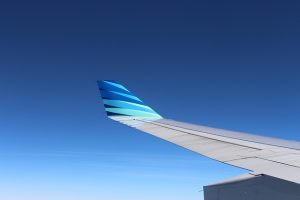
Modern airplanes require a consistent flow of fuel. If the pressure or flow rate drops, less fuel will reach the engines, which can have serious consequences for engine performance and flight safety. Fortunately, there are devices to assist with the fuel delivery. Known as boost pumps, they ensure fuel reaches the engines at the right pressure and flow rate.
Overview of Boost Pumps
Boot pumps are electric pumps that pressurize an airplane’s fuel system. They are typically installed inside or near the fuel tanks. The primary job of a boost pump is to create and maintain positive pressure throughout the system. When pressurized, fuel will flow faster and more efficiently to the engines.
Most airplanes have a dedicated fuel pump. The problem with dedicated pumps, though, is that they aren’t always effective in environments where pressure can change the flow rate. At high altitudes, for instance, dedicated fuel pumps may struggle to move fuel through the system. Boost pumps, however, pressurize fuel before it reaches the dedicated pump.
How Boost Pumps Work
While there are different types of boost pumps, they all work by pressurizing an aircraft’s fuel system. They are small electric pumps that, when activated, force fuel out of the tank and into the connected fuel line. From there, the pressurized fuel will travel to the airplane’s dedicated fuel pump.
Why Airplanes Use Boost Pumps
Airplanes use boost pumps for several reasons, one of which is to prevent vapor lock. Vapor lock is a phenomenon that involves a blockage caused by vapor. In airplanes, fuel may vaporize within a fuel line and block the flow of liquid fuel. Boost pumps help prevent vapor lock by maintaining positive pressure in the fuel system. With fuel constantly flowing through the system, fuel is less likely to turn to vapor, thereby protecting against vapor lock.
Boost pumps help during periods of high fuel demand. Takeoffs and rapid throttle changes, for instance, typically require more fuel than cruising. Boost pumps ensure an uninterrupted supply of fuel to the engines during these flight activities.
Airplanes use boost pumps for engine startups. Dedicated fuel pumps are engine-driven, meaning they only work when the engines are running. Boost pumps move fuel to the engines’ combustion chambers so that they can get up and running.
Boost pumps also help with crossfeeding. Crossfeeding involves the transfer of fuel from one tank to another tank, or from one tank to multiple engines.
Modern airplanes require a consistent flow of fuel. If the pressure or flow rate drops, less fuel will reach the engines, which can have serious consequences for engine performance and flight safety. Fortunately, there are devices to assist with the fuel delivery. Known as boost pumps, they ensure fuel reaches the engines at the right pressure and flow rate.



